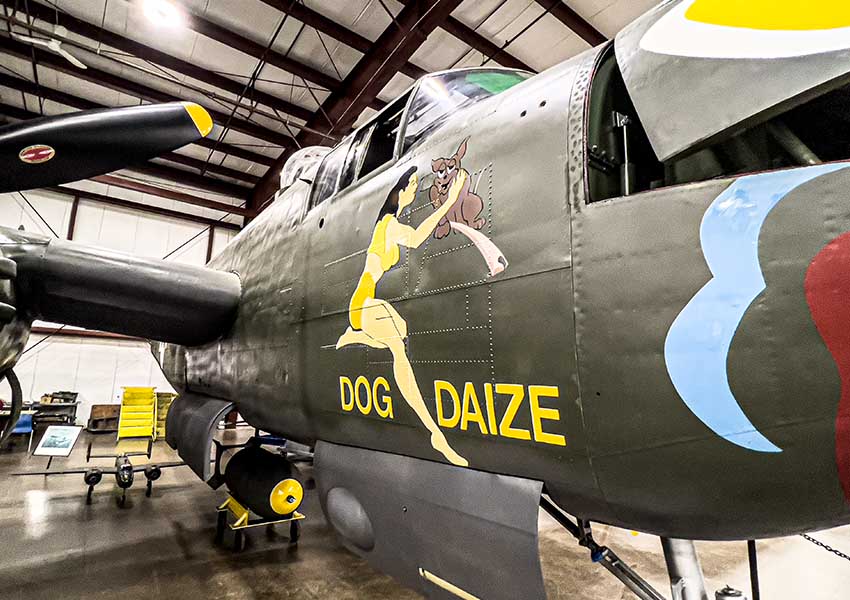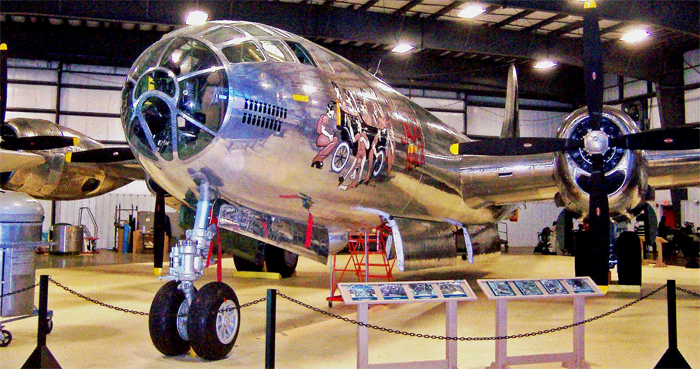New England Air Museum
36 Perimeter Road,
Windsor Locks, Connecticut 06096
website
Museum Mission
The New England Air Museum is committed to presenting the story of aviation, the human genius that made it possible and the profound effects that it has had on the way in which we live.

This plane is the original prototype of about 2000 Aeronca Chiefs produced before and after World War II. It was powered with a Continental A 50-1 engine. It had a cruise speed of 70 mph with a top speed of 90+ mph. Maximum maneuver speed was redlined at 130 mph. The plane had a useful load of 440 lbs. and a service ceiling of 14,000 ft.

The B-29 with its 11 man crew, a full load of fuel and a 5000 lb bomb load weighed 135,000 lbs and had a range of 3250 miles at 25,000 ft. Our B-29 is the centerpiece of the museum’s 58th Bomb Wing exhibit. The 58th Bombardment Wing merits an elite place in American history having played a key role in the defeat of the Japanese Empire in WW-II.

The need to balance aerodynamics with reality has plagued engineers since flight began. In the case of the Corsair the designer matched the most powerfull available engine with the smallest practical airframe. It took a very large, 13 foot, propeller to absorb the full output of the engine. Since this was to be a carrier-based fighter, strong landing gear was necessary. To make the landing gear long enough so the propeller cleared the ground, with conventional wings, would significantly weaken it. The solution was to bend the wing down, put the landing gear at the lowest point to keep it as short as possible, and then add dihedral to the outer wing resulting in the “inverted gull wing” which is the Corsair’s most characteristic feature.

This is an original Bleriot restored by Hall. Although it is not known exactly when this aircraft was built, it is thought to be about 1911. There were a number of refinements relative to the version that was the first aircraft to fly the English Channel. These included a revised landing gear system, control system, pilot placement and engine. Note the exteme camber and the thinness of the wing, trademarks of Pre-World-War I aircraft.
New England Air Museum
36 Perimeter Road,
Windsor Locks, Connecticut 06096
860-623-3305
staff@neam.org
















































